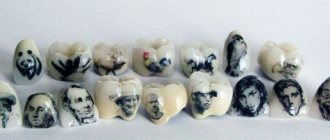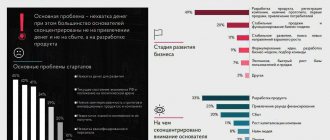Mini brick factory – Yufeng DMYF500
Country of origin: China, company JUNAN YUFENG MOLD FACTORY. A new DMYF500 plant (pictured above) with a capacity of 800-900 bricks per eight-hour shift will cost you $9,000. A used version can be found for 6-7 thousand dollars. The line weight is 2500 kg, cement and water are used as raw materials. Clay can also be used as a raw material.
To make a thousand units, approximately 775 kg of cement and 300 liters of water will be required.
Producing 27,000 bricks per month, the company earns about $8,300 in wholesale sales, and the net profit will be approximately $4,000 per month.
A ready-made mini plant with a production volume of 10,000 units per hour will cost $19,000. But the profit from it starts at $10,000 per month. Example - JZK40/40-3.0 from Yingfeng Machinery Co., Ltd.
Shift work
Many novice entrepreneurs with small production prefer to work on it independently. At the same time, it is quite natural that they work one, maximum one and a half shifts, and the rest of the time the equipment is simply idle.
The solution suggests itself - to hire workers, thanks to whom it will be possible to organize continuous production in several shifts. Of course, you will have to spend money on their salaries, but the profit that has increased several times will not only compensate for these expenses, but will also allow for a faster expansion of production.
Mini-plant for concrete production - RBU-1G-10B
Inexpensive cars like this one are produced in Russia on the basis of . This model is designed to produce 10 cubic meters of concrete per hour and costs $11,000. Power – 10.5 kW. Suitable for producing various types of concrete (silicate, gypsum, cement, polymer cement), this is important for expanding the sales market.
Mini concrete production plants require premises with an area of 250-300 square meters. It is best to open such an enterprise on the outskirts of the city or even outside the city. The main thing is to provide access to the building for trucks for loading raw materials (cement compounds, gypsum, lime, etc.) and finished products for sale.
The industrial workshop produces 2300-2400 cubic meters per month. m of concrete costing $35-40 per cubic meter. The cost of one cubic meter of production is about $21-22. After deducting rent, utilities and wages, we get a net profit of around 30-32 thousand dollars per month.
Home production: how to open?
So, regardless of the home manufacturing idea you choose, I have put together instructions for starting a home manufacturing business:
1. Evaluate your production idea. Will the cost of the product after production and margin match the cost of the competitor's product? Are there enough distribution points and how long will the product be in demand? What is the competition like? Who are your clients? How will your business benefit people?
2. Find quality suppliers of raw materials. The quality of your products will directly depend on the quality of raw materials. Find several suppliers and evaluate their raw materials.
3. We calculate production costs. After calculation, the amount of initial costs on paper will have to be doubled, since there will definitely be hidden problems that will require additional funds. But the profit must be divided by 2, since there will be defects, and with food products the goods may even deteriorate. This is done for realism.
3.1. We are conducting a trial production test. If possible, conduct test production to assess product quality. Repeat as necessary until the perfect product is created. 4. We write or order a business plan. It is necessary to sort out all the business issues that may arise. If you create it yourself, download 3-5 business plans for your topic and analyze them in detail. Based on the information received, create your business plan.
5. We purchase the required minimum equipment. Everything you need for your first production. A used one may cost less, but also be aware that a product that is already in use can fail at any time and does not have a warranty.
6. We carry out test production and are looking for clients. If you previously failed to create a product due to lack of equipment, now you need to conduct a test and create a product, and then sell it.
If you have any doubts about your business, buy used equipment. If you don't open, you can sell it again, otherwise it will be insurance in case the major new equipment fails and is sent for repairs.
7. Register the production. Registration of production is a big job. there will be checks and everything will be checked, from the quality of raw materials to the fire safety of the premises.
7.1. We are looking for staff. If workers are needed, we look for them at the same time as registering the business.
8. We advertise production and products. Each manufacturer of a certain product thinks about marketing the product. When you create a product, you need to decide whether you are just making a “one of a kind” product or creating a brand. Each product is promoted differently, and there is a big difference between a brand and a simple product. The brand is promoted more online and stands out with its packaging.
- read the article Manipulation in advertising examples
- read the article 50 business advertising ideas
Main ways of selling products:
- small and large wholesale;
- retail from their points;
- Internet sales
- delivery of goods for sale.
9. We remove defects and improve production. After all business processes have been launched, it is necessary to establish production and work on product quality, look for new clients and improve the business as a whole.
10. We draw up a business development strategy. After a few months of production, we write a business development strategy. We are developing issues such as improving production, additional products, fighting competition, finding sales points, and production automation. There are pitfalls in any production. This instruction shows a lot of work, but when starting a business there will be a lot of small nuances that you will have to solve on your own. That is why we recommend doubling the cost for your own precautions, and dividing the profit in half for realism.
When creating a business, don’t dream of big achievements. Business is a very complicated thing. If you think about unrealistic profits, then the very first problems will break you. Better prepare yourself for monthly work. Preparedness for reality is what entrepreneurs often lack.
Tips for home production
1. The production you choose must have demand in the market, so start from the availability of customers.
2. The idea of production should not be based on temporary demand or fashion; it should be relevant in 5 years. Otherwise, there should be quick self-sufficiency and subsequent large profits.
3. Take your time with registration, first create the first batch of products and sell them (if possible). Work on production quality.
4. Do not rush to throw money away, the first calculations are always wrong and, as a rule, 2 times more money is required, but divide the profit figure taken from the ceiling by 2 for realism.
5. Before registering a business, find several regular future clients and agree on a partnership.
6. Look for hidden reserves - be it business advertising, additional production options.
7. Create your own packaging and your own brand, if this is realistic in your production and you have capital for PR - in the future it will pay off many times over and increase recognition, and with it sales.
8. Take an interest in the client’s opinion, do not lose the opportunity to work to order.
9. Show your production from the inside - shoot videos, take photos, tours for clients, open days, etc. – all this increases confidence in the business.
10. Constantly check the suppliers of raw materials for your production, especially if the business is in the food industry. The quality of your products directly depends on the quality of raw materials.
11. Analyze your competitors and do 3 things:
- do what they already have, only better;
— learn from their mistakes;
- try something that no one has tried before.
12. Look for partners: if you produce bricks, partner with foam block manufacturers; windows - doors; things – clothing online stores.
13. Look for options for successful and constant growth - new consumers, scaling, more diverse advertising, combining ideas, entering the country's market and beyond.
These tips will make it easier to start a small business in home production and will help in setting up many issues.
Mini brewery – BlonderBeer 300 L
Optimal equipment for small businesses from the Slovak company Techimpex. Produces 300 liters of beer per day (restaurant-type brewery), the maximum number of varieties is 4-5. This volume is suitable for a small company supplying the product to cafes and draft beer stores. Ideally, you can open your own brewery store and sell beer at market rather than wholesale prices. The cost of the line is around $10,000.
Nuances of the organization
In addition to the set of equipment, you will need to separately purchase fermentation tanks (tskt - cylindrical-conical tank), since aging and fermentation last 10-25 days. In order to maintain the required production volumes daily, you will have to spend money on purchasing 10-15 centrifuges per 200 liters (costs from $8,000).
The microbrewery's revenue reaches $7,000 per month, net profit is $3,500-4,000.
Other profitable options
Where else can you buy a mini-brewery at a good price? The companies ZIP Technologies Ltd (Hungary), Impiantinox Srl (Italy), Miass Machine-Building Plant (Russia), BeerFactory (importer of Chinese brands).
It is possible to order a more productive device from China For example, a line from GEONETconsult Ltd producing 150 liters per hour (1200 liters per day) will cost around $20,000.
Manufacturing of joinery products
Wood products have gained particular popularity today. All this is thanks to its quality indicators. The products last a long time and also have an attractive appearance. But it’s quite difficult to find a good craftsman who would make products to order.
There is a lot of competition in this business, and you will initially have to earn a reputation. What can be produced from wood:
- interior and entrance doors;
- tables and chairs;
- cabinets and chests of drawers;
- wardrobes and beds;
- shelves and stands.
The range of products does not end there. It all depends on the imagination and abilities of the businessman, because you will have to start production yourself in order to save a little at the initial stage of development.
For production you will need the following:
- machines: lathe, sawing, grinding;
- jointer;
- table;
- auxiliary tools.
If the products will be painted, it is necessary to allocate a separate room for the work.
They lure buyers with original design and quality of work. The more unusual the product, the more interest and delight it will cause.
Mini-factory for the production of toilet paper - XY-TQ-1575B
This is equipment for the production of full cycle toilet paper at a speed of 150-200 meters of paper per minute of the Chinese brand China-line. Price – $16,000. The kit includes a tray for raw materials, rollers for moving paper, an embossing unit, perforation, block rolling, cutting and packaging machines. Power – up to 10 kW. Dimensions – 6.2X2.75X1.8 m.
Such a line requires a room of about 150 square meters. m with sewerage and exhaust hood. Water consumption – from 3 cubic meters per day. The raw material is waste paper. Thanks to this, the idea of producing toilet paper is equated to socially significant projects, and the entrepreneur can count on subsidies from the state.
One ton of raw materials allows you to obtain up to 9 thousand rolls of finished products. The processing rate for raw materials is 1-2 tons per day.
You can actually earn $10,000 or more per month selling toilet paper.
Ideas for mini-production of building materials
This type of activity is familiar to almost everyone today. The following materials can be crafted in the garage:
- foam block;
- aerated concrete;
- curbs;
- paving slabs;
- concrete rings;
- hatch covers;
- grape columns;
- adobe bricks and much more.
That is, almost all small structures created on the basis of concrete mortar or natural clay.
Raw materials for production:
- cement;
- sand;
- water;
- clay;
- additional components.
The latter include hardeners, which allow the concrete solution to harden much faster. As well as substances that improve the quality of concrete mortar.
To equip a mini-workshop for this production, you will need the following:
- concrete mixer;
- forms for giving parameters to the product;
- auxiliary tools;
- vibration table, which you can assemble yourself;
- a regular table for laying out tools and forms.
The natural hardening process of the concrete solution can last from one to three days. If you put a small chamber in the garage that will be heated, you will get the finished product faster. Forms with concrete mortar are placed in this chamber, where they remain until the material dries completely.
It would be useful to organize not only a mini-workshop, but also a small warehouse for storing finished products. In private households there will be no problems with this issue.
Mini-feed mill – 9FH-500
Chinese mini-factories for small businesses are best suited for the production of compound feed. For example, a 9FH-500 machine from the supplier Argentum Amur will cost only $2,000. Its productivity is 1500 kg of feed per hour, power is 4-7.5 kW. Weight is 370 kg, and dimensions are 1.44 x 1.04 x 2.3 m. This will allow you to install the machine in a small room (70-80 sq. m along with a warehouse for raw materials, products and utility rooms), saving on rent. Such a plant does not require heating.
9FH-500 is suitable for crushing feed grains (rye, corn, wheat, barley, etc.) and processing sawdust, bran, husks, straw, hay. As a result, we get complete feed for birds and livestock.
Such a machine produces 350 tons of feed per month and allows you to receive a net income of $9,000 .
Rational use of the production site
Rationally organized workplaces meet the following requirements: free space around the worker, absence of obstacles (nothing should interfere with his movements), passages between machines and workshops are designed so that workers do not have to spend a lot of time moving.
What gives.
Increasing equipment utilization rate, saving time and labor costs, freeing up production space, reducing losses during transportation and movement.
The practitioner tells
Marina Antyufeyeva Director for Development, Production Optimization and Quality Management System of the Automotive Components Division of Avtokom OJSC, Kaluga
In 2005, at the Kaluga Automotive Electrical Equipment Plant (KZAE), I headed the production development center. We started introducing improvements from the assembly areas, since there was equipment that was easy to move and operations were short in duration. There is now a shortage of personnel at all factories in Russia; there was a shortage of balancers in the assembly areas of this enterprise. When observing the operator’s work, it turned out that the balancer receives paste at the workshop warehouse four to five times per shift (which is 1.66 seconds per part). If the balancing paste is delivered to the workplace, this will reduce periodic work by 35 hours.
Another example. Analyzing the work of the assembly section, it was revealed that the equipment was placed not according to the technological chain, but according to the principle “where there was free space.” We made a new layout, arranged the equipment sequentially - in accordance with the technological process. Now the part moved from machine to machine and was passed from hand to hand. There is no longer a need for a large amount of containers and a supply of parts, 90 sq. m. has been freed up. m of area, the total production cycle time decreased from 420.11 sec. up to 331.86 sec. This increased the site's throughput by 20%. And most importantly, the operators, mostly women, stopped carrying heavy loads from one workplace to another.
OJSC "Avtokom"
- one of the suppliers of AvtoVAZ, manages the Kaluga Auto Electronics Plant (Kaluga), Kozelsky Mechanical Plant (Kaluga Region), Lyskovsky Electrical Engineering Plant (Nizhny Novgorod Region), Serpukhov Automobile Plant, owns a 50 percent share (Samara Region). The company was founded in 2000. Number of employees - 16.5 thousand. Annual turnover - 300 million US dollars.
Mini-factory for the production of canned fish - NPO "MINIPLANT"
A line from a Russian manufacturer, including a cutting machine, a dispenser and a device for sealing canned food. The price of this configuration is around 11 thousand dollars. It produces 800 cans per hour and requires an area of about 90 square meters for the workshop itself. Such a machine must be serviced by 2-3 workers.
Even such inexpensive equipment for small businesses will allow the production of approximately 192 thousand cans per month. It is profitable for a small enterprise to produce a product in the middle price segment: tomato sprat, sardines in oil, sprats. Monthly net profit – from 10 thousand dollars.
Mini-plant for the production of milk and dairy products – GEONETconsult
Such mini equipment for small businesses is produced in Korea and China; it can be purchased through sales offices in Russia. The cost of a set with a capacity of 300 liters per hour is $22,000. It is used to process milk to make kefir, sour cream, yogurt, and cottage cheese. Power – 39 kW.
For a small enterprise, mobile milk is perfect; the production volume is from 500 liters per day. Cost – from $13,000. Modular complexes are fully equipped and consist of ready-made module workshops; they also have areas for warehouses, bathrooms, and utility rooms.
How much can you earn from milk processing? Monthly revenue is approximately $30 thousand, net income is about $14,000-15,000.
What kind of production is profitable to open?
Studying the most profitable areas of business, you can see that a high level of profitability is typical for the production of goods that are in massive demand by private buyers.
These include:
- Food;
- Clothes and accessories;
- Textiles for the home;
- Cabinet, upholstered and country furniture;
- Construction and finishing materials;
- Children's toys and attractions;
- Goods for pets;
- Souvenir products.
Moreover, small enterprises often demonstrate better economic performance than large factories. The reason for this phenomenon is simple: such business entities usually do not have excess funds, and therefore cannot afford to maintain unnecessary assets, hire a large number of support staff and misuse resources.
Mini-plant for the production of paper and wet wipes - A419 LYHIA, model WN-C840
Country of origin: China. Such machines for small businesses produce about 3000 pieces/min, their price is around 20 thousand dollars. The advantage of such equipment is that it produces dry and wet self-stretching wipes. This significantly expands the sales market. Power – 20 kW, dimensions – 4.5x1.9x1.85 meters, weight 2300 kg. For an industrial workshop, an area of 20 square meters is sufficient, the rest of the space is allocated for storage and utility rooms.
The kit includes machines for unwinding paper base, embossing, cutting, folding, packaging and packaging of finished products.
By producing 40 million napkins per month (or 400,000 packages), you earn approximately $60,000, net profit - about 30 thousand.
Making products at home
Consumer goods have been sold in past centuries. Only previously the sales market was limited to neighbors and relatives. Now such home mini-production is developing on an industrial scale.
If the size of the landholding allows, you can grow vegetables, fruits, and agricultural crops. At the moment, the state purchases finished products of these types for the purpose of processing or resale.
Note. Quite often, a farmer works at a loss. This factor is due to fairly large initial financial investments and their incorrect distribution.
It is for this reason that it is necessary to first calculate all the costs of operating the business and draw up a business plan planning the payback of the project. You can do this yourself, but it is better to involve a specialist.
The ideas for mini-production of consumer goods do not end there. Dairy products can be produced. It is worth considering that keeping livestock is not necessary. It is enough to find a permanent supplier of quality raw materials.
Milk can be processed and products made from it only with the help of special equipment. Since such goods are considered perishable and belong to the first risk group for infection with harmful bacteria. The technological process must be followed.
Advice. This type of activity must be registered, and a license must be obtained for the production of products.










